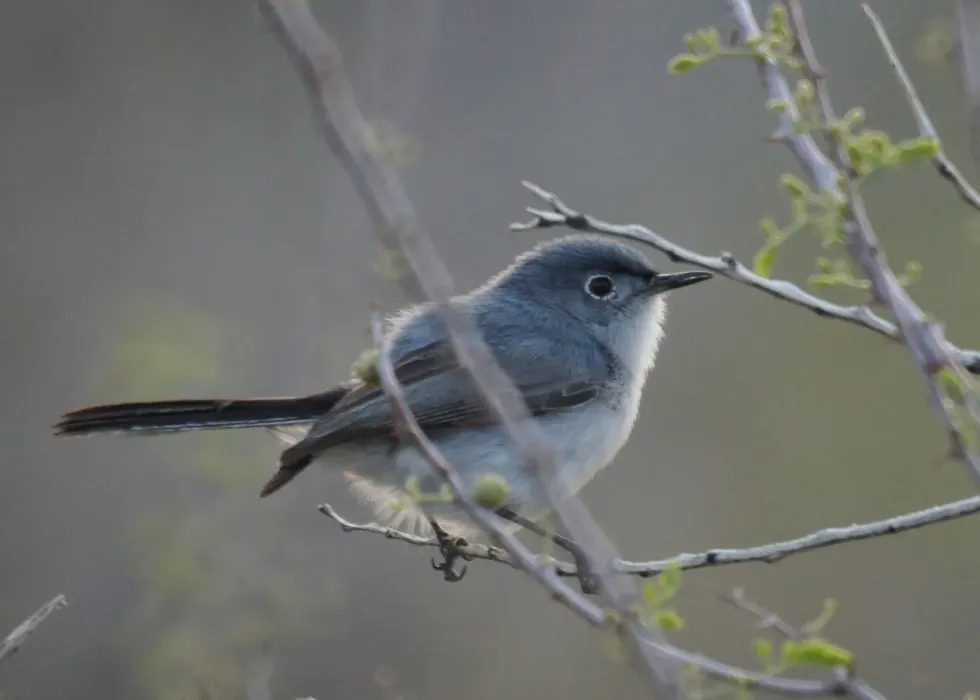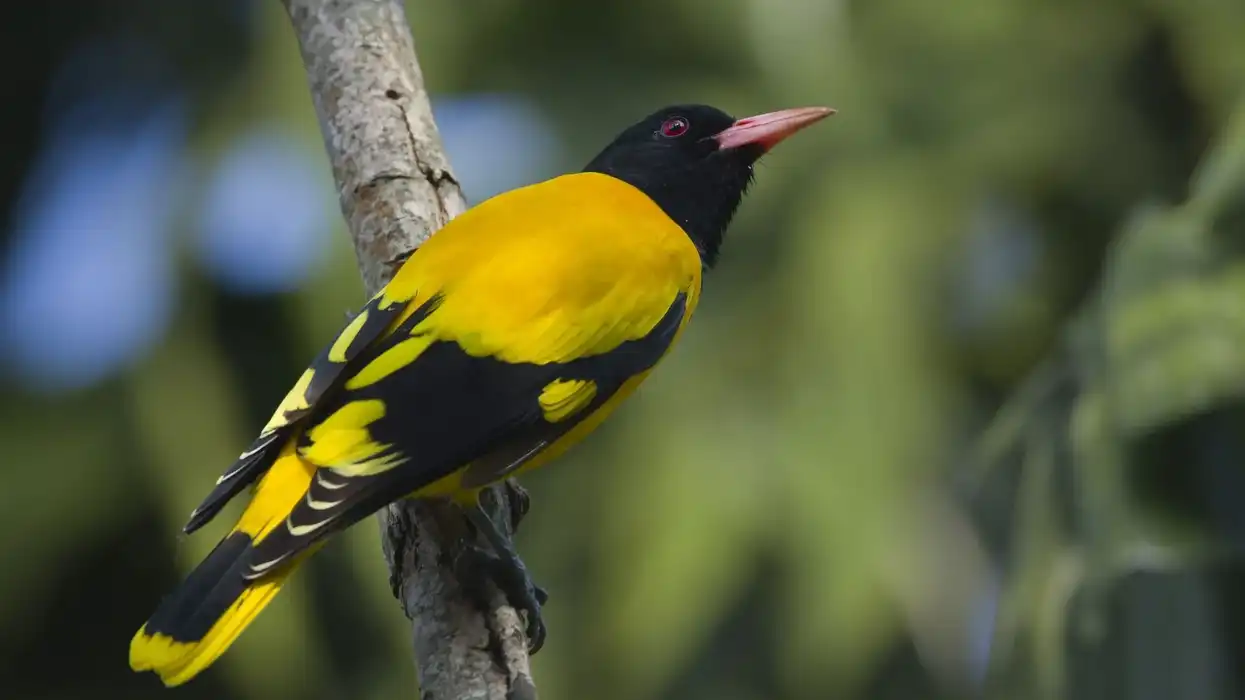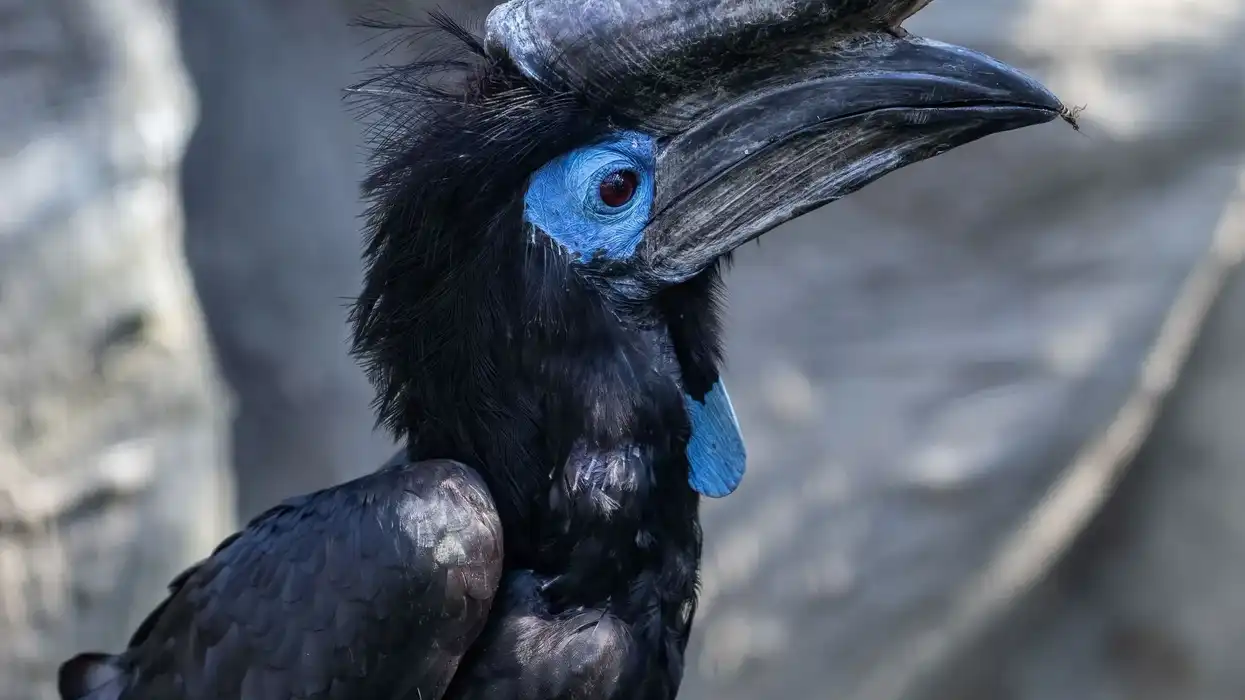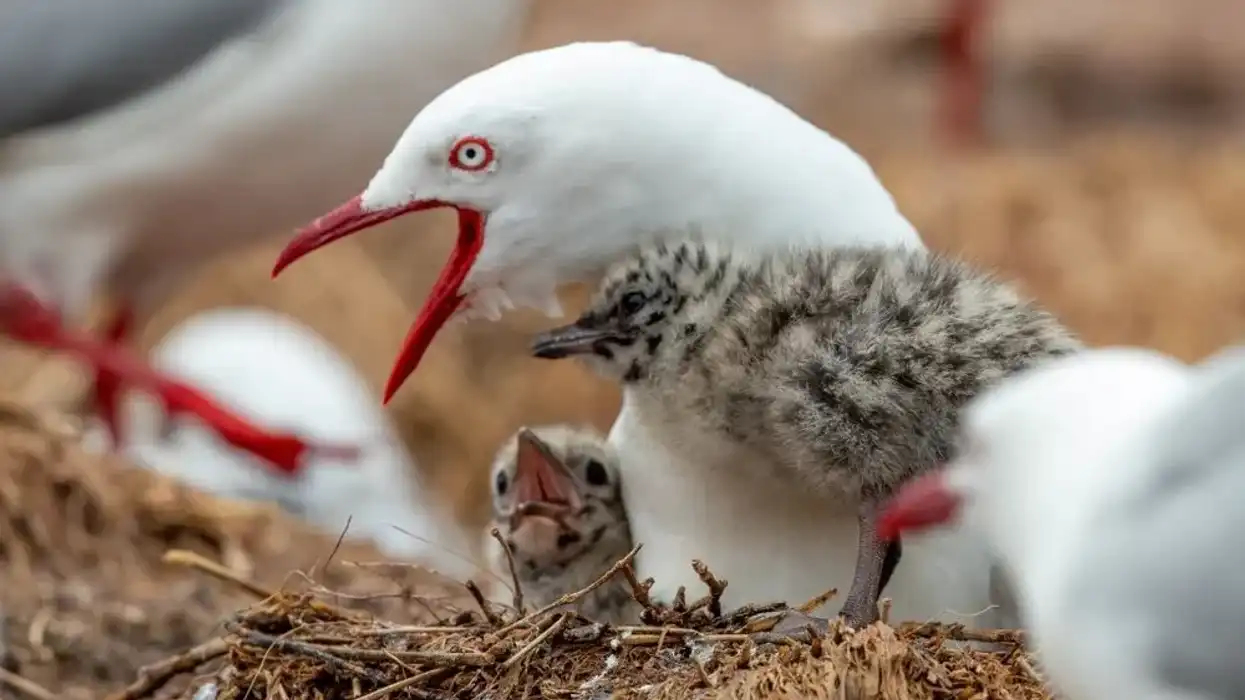The black-tailed gnatcatcher (Polioptila melanura), belonging to the order Passeriformes family, is a species of New World bird that belongs to the Polioptilidae family. These birds are resident species of North America, mainly found in the southwest of the United States and Mexico.
They are found in the Sonoran and Chihuahuan desert in the United States. The preferred habitat of these North American birds includes scrubland and arid desert. They are closely related to the blue-gray gnatcatcher, another species of the same family Poliotilidae.
However, the blue-gray gnatcatcher differs in respect to their foraging behavior, migration, and appearance. They feed on a large variety of small insects from the creosote bush, brush, and scrub.
These birds form pairs all year round including the breeding season. Both birds in the pairs are involved in building the nest on the breeding ground. After mating, the females lay around two to six eggs. Both parents are involved in the parental care of the young.
The young birds leave the nest after a span of 15 days after hatching. These birds are not considered to be endangered. However, the destruction of habitat and climate change are some major threats encountered by this species.
If you liked reading this article, then do check out swallow and eastern kingbird!
Black-Tailed Gnatcatcher Interesting Facts
What type of animal is a black-tailed gnatcatcher?
The black-tailed gnatcatcher (scientific name Polioptila melanura) is a species of bird belonging to the genus Polioptilidae. These birds belong to the order Passeriformes family and are resident species of North America.
What class of animal does a black-tailed gnatcatcher belong to?
Black-tailed gnatcatchers belong to the class Aves. The black-tailed gnatcatcher's scientific name is Polioptila melanura.
How many black-tailed gnatcatchers are there in the world?
The exact number of these individuals present in the world is not known. However, these birds appear to have a decreasing trend in population.
Where does a black-tailed gnatcatcher live?
Black-tailed gnatcatchers are found throughout Mexico and the southwest United States in North America. These birds inhabit the Sonoran desert, which covers California and Arizona in the United States.
Their range also extends to the northwestern part of Mexico.
Their range is found in the Chihuahuan desert which covers the western part of Texas, the southeastern part of Arizona, and extends to the northern and central part of the Mexican plateau, in the range of the Sonoran desert in the west. Migration is not seen in these birds during the winter season.
What is a black-tailed gnatcatcher's habitat?
These birds are found in arid deserts and scrubland. The arid desert climate is characterized by extreme temperature conditions along with scanty rainfall. It consists of spare vegetation like shrubs, herbaceous plants, and bushes. These birds prefer creosote bush, mesquite, and salt-bush.
Scrub mostly comprises shrubs, grasses, and herbs. These birds also reside in chaparral habitats characterized by mild winters and dry summers. The vegetation comprises shrub, bush, and brush. They are found up to an elevation of 7000 ft (2.13 km) from sea level.
Who do black-tailed gnatcatchers live with?
These North American birds are known to live in pairs all year round.
How long does a black-tailed gnatcatcher live?
The exact lifespan of these North American birds is unknown. However, like other gnatcatchers, it can be assumed that they live up to three to four years.
How do they reproduce?
These birds are monogamous, having one partner throughout their lives. Their breeding season occurs during the summer months.
The male bird is involved in defending the territory during the breeding season. Both the males and females build the nests in two to four days on the breeding ground. The nests are usually built with plants, feathers, furs, and cactus wool on leafy trees or shrubs.
After mating, the females lay around two to six eggs. Both parents are involved in incubating the eggs and taking care of the young. The young birds are underdeveloped at the time of birth and are fed by their parents.
The young birds leave the nest after a span of 15 days after hatching. These birds attain reproductive maturity at one year of age.
What is their conservation status?
The International Union for Conservation of Nature has listed black-tailed gnatcatchers (Polioptila melanura) as a species of Least Concern. The destruction of habitat and climate change are the major threats encountered by this species.
Black-Tailed Gnatcatcher Fun Facts
What do black-tailed gnatcatchers look like?
Black-tailed gnatcatchers exhibit sexual dimorphism, as the male and the female bird differ in their appearances. These tiny birds have a wingspan of 5.5 in (14 cm).
Their plumage is blue-gray in color along with white underparts. The males during the summer season develop a black cap on their head along with a white eye-ring.
Females do not develop any such black caps. Their tails are mostly black in color and hence they are given the name, black-tailed gnatcatchers. The black underside of the tails helps in differentiating them from another closely related species called the blue-gray gnatcatcher.
The outer feathers of their tails are usually white at the ends along with white spots near the tips. These birds have slender bills.
How cute are they?
Their cuteness usually stems from their appearance as they have a bluish-gray plumage, black tail, and slender bill which make them cute, just like the black-capped gnatcatcher.
How do they communicate?
These birds communicate through a range of vocalizations. The black-tailed gnatcatcher call is mostly heard while they are defending their territories. They often imitate the calls of other birds. Their calls consist of low-pitched nasal calls and successive high-pitched calls. The black-tailed gnatcatcher song consists of a series of jumbled notes.
How big is a black-tailed gnatcatcher?
This bird is around 4.5 in (11.4 cm) in length. It is smaller than a blue jay with 8.66 -11.8 in (22-30 cm) length.
How fast can a black-tailed gnatcatcher fly?
Their exact speed during flight is not known. However, they make short and quick flights.
How much does a black-tailed gnatcatcher weigh?
A black-tailed gnatcatcher (Polioptila melanura) weighs around 0.2 oz (5.6 g).
What are the male and female names of the species?
Scientists do not have specific names to refer to male and female black-tailed gnatcatchers. They are commonly referred to as male black-tailed gnatcatchers and the female black-tailed gnatcatchers.
What would you call a baby black-tailed gnatcatcher?
Baby black-tailed gnatcatcher is known as a chick.
What do they eat?
These carnivorous birds feed on a variety of small insects. Their diet includes caterpillars, ants, beetles, wasps, and spiders. The water requirements of this species are mostly met through the insects consumed in their diet.
Are they poisonous?
No, this species is not poisonous.
Would they make a good pet?
These birds can be attracted to the backyard by planting shrubs and bushes of their choice. However, there have been no reports of keeping them as pets.
Did you know...
A particular bird species known as cowbirds often lay their eggs inside the black-tailed gnatcatcher's nest. Cowbirds are a common brood parasite found in North America. The black-tailed gnatcatcher raises the cowbird's young as their own.
What is the difference between a female and male black-tailed gnatcatcher?
The main difference between a black-tailed gnatcatcher male vs female is the presence of the black cap on the male during the breeding season. The female bird never develops a black cap on its head. Both the the male and female species can be differentiated from each other by this cap.
What is the difference between a blue-gray gnatcatcher and a black-tailed gnatcatcher?
There are a few differences between blue-gray gnatcatcher vs black-tailed gnatcatcher in their appearance, migration, and foraging behavior. Blue-gray gnatcatchers have a black tail with a white underside, whereas black-tailed gnatcatchers have a black tail along with a black underside.
Blue-gray gnatcatchers migrate to Mexico and Central America during winter, while black-tailed gnatcatchers are a resident species and do not migrate in winter. Blue-gray gnatcatchers catch insects in mid-air, while black-tailed gnatcatchers feed on insects from the creosote bush, mesquite, brush, and scrub.
Here at Kidadl, we have carefully created lots of interesting family-friendly animal facts for everyone to discover! Learn more about some other birds from our Umbrellabird facts and Little Bee-Eater facts pages.
You can even occupy yourself at home by coloring in one of our free printable black tailed gnatcatcher coloring pages.









